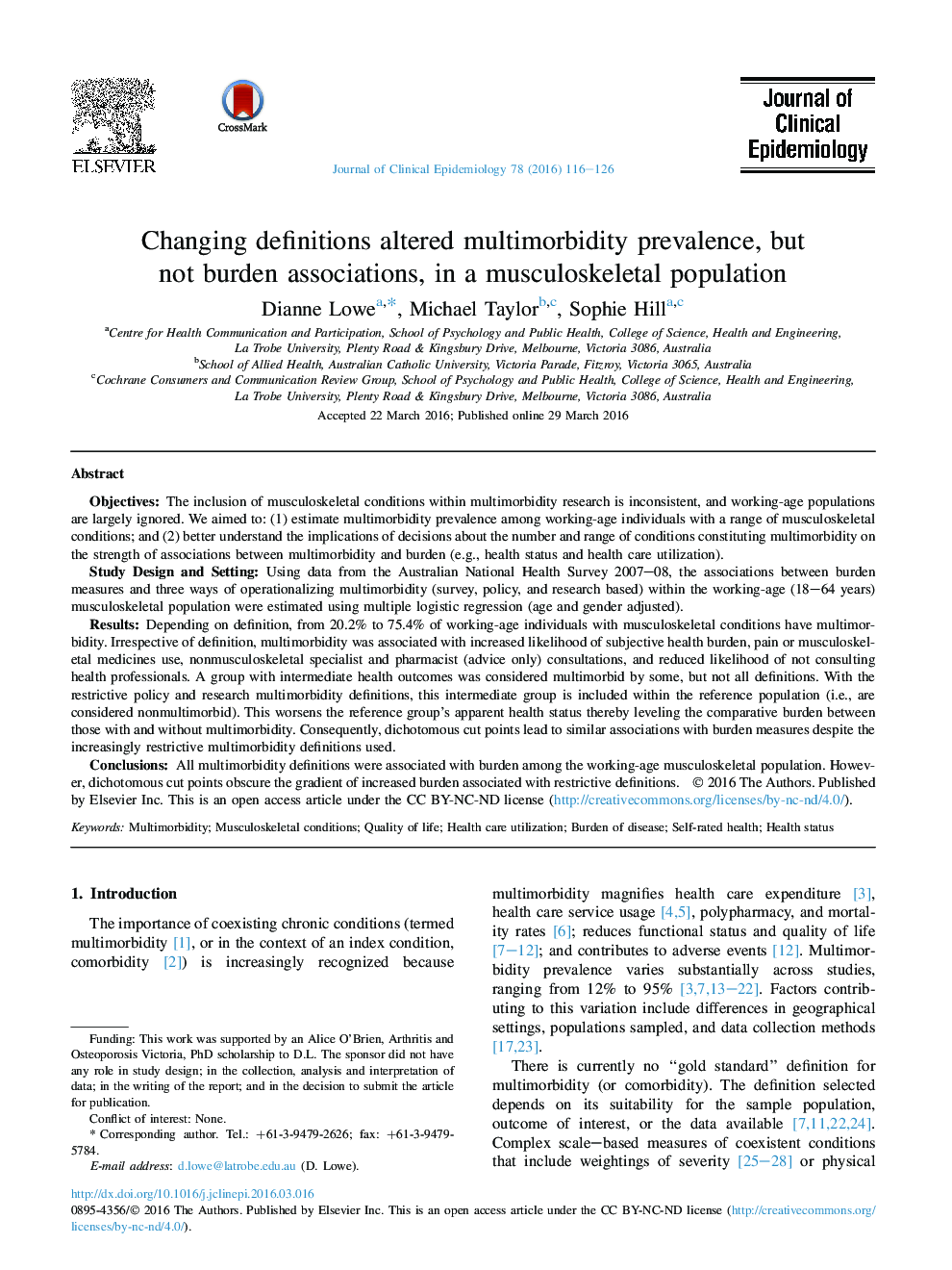| کد مقاله | کد نشریه | سال انتشار | مقاله انگلیسی | نسخه تمام متن |
|---|---|---|---|---|
| 5121883 | 1486848 | 2016 | 11 صفحه PDF | دانلود رایگان |
ObjectivesThe inclusion of musculoskeletal conditions within multimorbidity research is inconsistent, and working-age populations are largely ignored. We aimed to: (1) estimate multimorbidity prevalence among working-age individuals with a range of musculoskeletal conditions; and (2) better understand the implications of decisions about the number and range of conditions constituting multimorbidity on the strength of associations between multimorbidity and burden (e.g., health status and health care utilization).Study Design and SettingUsing data from the Australian National Health Survey 2007-08, the associations between burden measures and three ways of operationalizing multimorbidity (survey, policy, and research based) within the working-age (18-64Â years) musculoskeletal population were estimated using multiple logistic regression (age and gender adjusted).ResultsDepending on definition, from 20.2% to 75.4% of working-age individuals with musculoskeletal conditions have multimorbidity. Irrespective of definition, multimorbidity was associated with increased likelihood of subjective health burden, pain or musculoskeletal medicines use, nonmusculoskeletal specialist and pharmacist (advice only) consultations, and reduced likelihood of not consulting health professionals. A group with intermediate health outcomes was considered multimorbid by some, but not all definitions. With the restrictive policy and research multimorbidity definitions, this intermediate group is included within the reference population (i.e., are considered nonmultimorbid). This worsens the reference group's apparent health status thereby leveling the comparative burden between those with and without multimorbidity. Consequently, dichotomous cut points lead to similar associations with burden measures despite the increasingly restrictive multimorbidity definitions used.ConclusionsAll multimorbidity definitions were associated with burden among the working-age musculoskeletal population. However, dichotomous cut points obscure the gradient of increased burden associated with restrictive definitions.
Journal: Journal of Clinical Epidemiology - Volume 78, October 2016, Pages 116-126
